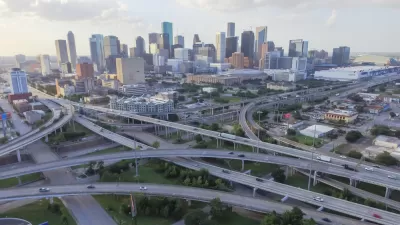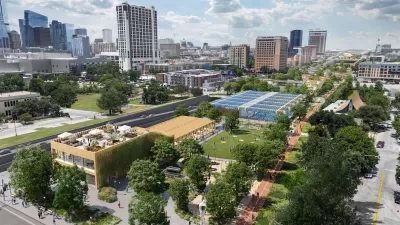Local and regional transportation planners responded skeptically to data from the Texas Department of Transportation showing Texans driving less.

"According to Texas DOT’s data, the average Texan is driving less every day, and Dallas, Tarrant, and Harris counties saw a decline in total driving mileage, even though they added millions of people," according to an article by Jay Blazek Crossley to summarize revelations made in earlier coverage.
The current article digs deeper into the implications of the data for growth in Texas. First, however, Crossley considers the question of whether the data can even be trusted. Count Alan Clark, transportation planning director of the Houston-Galveston Area Council (H-GAC), among those who believes TxDOT's data to be erroneous.
Clark believes that TXDOT traffic data does not accurately reflect how much people are driving in his region, and he’s worried that TXDOT will use this possibly flawed data to shortchange Houston out of several billion dollars in transportation funds that will be spent elsewhere in the state.
According to Crossley, Clark is not alone in his reluctance to accept the idea that Texas residents have drastically changed their travel habits. Meanwhile, how the state plans for its future, with new funding enabled by Prop 7, as approved by Texas voters in November 2015.
FULL STORY: Is Something Wrong With TXDOT’s Data on Driving?

Maui's Vacation Rental Debate Turns Ugly
Verbal attacks, misinformation campaigns and fistfights plague a high-stakes debate to convert thousands of vacation rentals into long-term housing.

Planetizen Federal Action Tracker
A weekly monitor of how Trump’s orders and actions are impacting planners and planning in America.

San Francisco Suspends Traffic Calming Amidst Record Deaths
Citing “a challenging fiscal landscape,” the city will cease the program on the heels of 42 traffic deaths, including 24 pedestrians.

Defunct Pittsburgh Power Plant to Become Residential Tower
A decommissioned steam heat plant will be redeveloped into almost 100 affordable housing units.

Trump Prompts Restructuring of Transportation Research Board in “Unprecedented Overreach”
The TRB has eliminated more than half of its committees including those focused on climate, equity, and cities.

Amtrak Rolls Out New Orleans to Alabama “Mardi Gras” Train
The new service will operate morning and evening departures between Mobile and New Orleans.
Urban Design for Planners 1: Software Tools
This six-course series explores essential urban design concepts using open source software and equips planners with the tools they need to participate fully in the urban design process.
Planning for Universal Design
Learn the tools for implementing Universal Design in planning regulations.
Heyer Gruel & Associates PA
JM Goldson LLC
Custer County Colorado
City of Camden Redevelopment Agency
City of Astoria
Transportation Research & Education Center (TREC) at Portland State University
Jefferson Parish Government
Camden Redevelopment Agency
City of Claremont





























